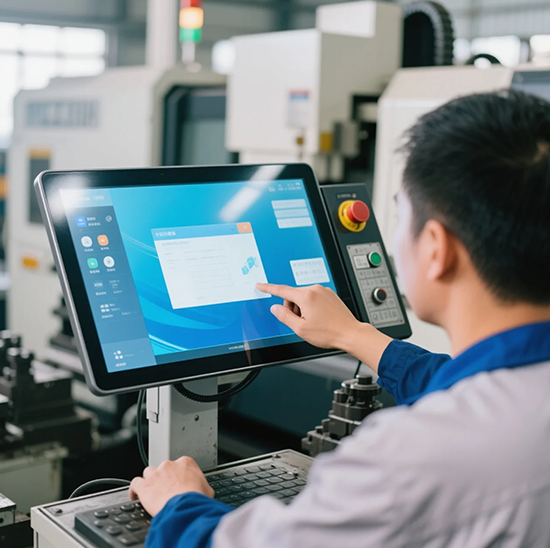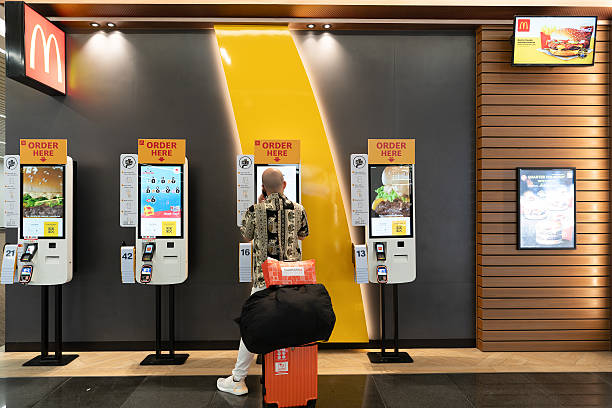O controle climático do carro percorreu um longo caminho desde botões e controles deslizantes básicos - Today, a tela sensível ao toque do controle climático está redefinindo como motoristas e passageiros ajustam a temperatura, fluxo de ar, e conforto. Chega de se atrapalhar com pequenos mostradores enquanto dirige ou apertar os olhos para encontrar o botão “descongelar”; uma tela sensível ao toque bem integrada coloca todas as funções climáticas ao seu alcance, com ícones intuitivos, predefinições personalizáveis, e até recursos inteligentes que se adaptam aos seus hábitos. Esteja você se refrescando em um dia quente de verão, aquecendo no inverno, ou desembaçar o pára-brisa na chuva, a tela sensível ao toque do Climate Control transforma uma tarefa simples em uma experiência perfeita. Este guia explicará por que a integração de telas sensíveis ao toque com controle climático é importante, quais recursos procurar, e como escolher o sistema certo para o seu veículo, ajudando você a priorizar o conforto sem comprometer a segurança.

Por que integrar uma tela sensível ao toque de controle climático? Principais benefícios
Substituir os controles climáticos tradicionais por uma tela sensível ao toque não significa apenas “modernizar” seu carro – ele resolve verdadeiros problemas para motoristas e passageiros:
1. Operação simplificada (Menos distração)
Os painéis climáticos tradicionais muitas vezes têm 10+ botões e mostradores, dificultando o ajuste rápido das configurações. Uma tela sensível ao toque de controle climático:
- Funções relacionadas a grupos (por exemplo., temperatura, velocidade do ventilador, direção do fluxo de ar) em claro, menus rotulados - para que você possa encontrar “aquecimento do banco traseiro” ou “descongelamento” com um toque.
- Usa grande, ícones fáceis de identificar (por exemplo., um floco de neve para AC, um sol para aquecer) em vez de texto pequeno, reduzindo o tempo que você gasta olhando para longe da estrada.
2. Personalização para todos os passageiros
Os carros modernos têm controle climático multizonas, e telas sensíveis ao toque facilitam o gerenciamento:
- Ajustar driver, passageiro, e temperaturas dos bancos traseiros de forma independente através da tela – chega de discussões sobre “muito quente” ou “muito frio”.
- Salvar predefinições personalizadas (por exemplo., “Deslocamento matinal” = 22°C, ventilador baixo; “Viagem por estrada” = 20°C, AC traseiro ligado) para que você possa alterar as configurações com um toque, em vez de redefinir todas as vezes.
3. Adaptabilidade Inteligente (Conforto sem esforço)
As telas sensíveis ao toque de controle climático avançado usam sensores e IA para otimizar o conforto automaticamente:
- Sensor de temperatura ambiente: Ajusta o resfriamento/aquecimento com base no clima externo (por exemplo., aumenta o AC se o sol atingir o painel).
- Detecção de ocupação: Desliga a climatização do banco traseiro se não houver ninguém sentado lá, economizando energia (crítico para os EVs maximizarem o alcance).
- Pré-condicionamento: Sincroniza com o aplicativo do seu telefone para aquecer ou resfriar o carro antes de você entrar, para que você entre em uma cabine confortável, mesmo em dias extremos.
Principais recursos a serem procurados em uma tela sensível ao toque de controle climático
Nem todos os sistemas climáticos com tela sensível ao toque são iguais – esses recursos garantem a usabilidade, segurança, e conforto:
1. Capacidade de resposta e feedback
- Baixa latência: A tela deve registrar toques dentro de 50 a 80 ms – sem esperar que o AC ligue depois de tocar no botão.
- Feedback tátil: Vibra ligeiramente quando você ajusta as configurações, para que você saiba que sua entrada foi recebida sem olhar para a tela (reduz a distração).
2. Integração de clima e modo de direção
Os melhores sistemas funcionam com outros recursos do seu carro para aumentar o conforto:
- Descongelar (Integração de degelo): Utiliza os sensores do carro para ativar automaticamente o degelo e ajustar a velocidade do ventilador quando o para-brisa embaça.
- Sincronização do modo de direção: Ajusta o clima com base em como você dirige, por exemplo., O “Modo Sport” aumenta o fluxo de ar para mantê-lo fresco durante uma condução agressiva, enquanto o “Modo Eco” reduz a velocidade do ventilador para economizar combustível/alcance EV.
3. Acessibilidade para todos os usuários
- Modo noturno: Escurece automaticamente a tela e muda para cores mais quentes à noite, então ícones brilhantes não cansam seus olhos.
- Controle de voz: Permite ajustar o clima com comandos como “Definir a temperatura para 21°C” ou “Ligar o AC traseiro” – perfeito para quando suas mãos estão no volante.
- Grandes alvos de toque: Botões e controles deslizantes devem ter pelo menos 15 mm × 15 mm, para que você não toque acidentalmente na configuração errada (mesmo com luvas).
Como escolher e instalar uma tela sensível ao toque de controle climático
Esteja você atualizando um carro antigo ou escolhendo um novo, siga estas etapas:
1. Combine o sistema com o seu veículo
- Carros novos: Procure telas integradas de fábrica que funcionem com o hardware climático existente do seu carro (por exemplo., Tela de 15 polegadas do Tesla, Sistema de 12,3 polegadas da Toyota)—isso evita problemas de compatibilidade.
- Carros mais antigos: Escolha telas sensíveis ao toque de reposição projetadas para a marca/modelo do seu veículo (por exemplo., 7-telas de polegadas para Honda Civics, 10-polegadas para Ford F-150s). Certifique-se de que o sistema suporta as zonas climáticas do seu carro (solteiro vs.. duplo vs.. zona tripla).
2. Priorize a segurança em vez dos recursos
- Evite telas com menus excessivamente complexos – atenha-se a sistemas onde as funções principais (AC ligado/desligado, ajuste de temperatura) estão a um toque de distância.
- Procure por botões de “atalho físico” (por exemplo., uma tecla de degelo dedicada) junto com a tela sensível ao toque, eles permitem que você acesse funções críticas rapidamente em emergências.
3. Instalação Profissional (Para sistemas pós-venda)
- A integração do controle climático requer fiação para o HVAC do seu carro (aquecimento, ventilação, ar condicionado) sistema – a instalação DIY pode danificar componentes ou causar mau funcionamento. Contrate um técnico certificado com experiência com o seu tipo de veículo.
Perguntas frequentes sobre telas sensíveis ao toque de controle climático
1º trimestre: E se a tela sensível ao toque do controle climático congelar? Ainda posso ajustar a temperatura?
A1: Sim – a maioria dos sistemas possui botões físicos de backup (por exemplo., AC ligado/desligado, velocidade do ventilador) para emergências. Se a tela congelar, use esses botões, então reinicie a tela (segure o botão liga / desliga por 10 segundos) assim que for seguro fazê-lo.
2º trimestre: As telas sensíveis ao toque do controle climático consomem mais energia (ruim para veículos elétricos)?
A2: Não – as telas sensíveis ao toque modernas são eficientes em termos energéticos (usando <3W de poder). Na verdade, recursos inteligentes como detecção de ocupação podem economizar energia desligando zonas climáticas não utilizadas, ajudando os EVs a maximizar o alcance.
3º trimestre: Posso usar a tela sensível ao toque para controlar a climatização dos bancos traseiros?
A3: Sim, se o seu carro tiver controle climático multizona, a tela terá uma guia ou ícone “Traseiro” para ajustar a temperatura, velocidade do ventilador, e fluxo de ar para passageiros do banco traseiro. Alguns sistemas permitem até que os passageiros traseiros controlem a sua zona através de um pequeno ecrã táctil secundário.
4º trimestre: Como faço para limpar a tela sensível ao toque do Climate Control sem danificá-la?
A4: Use um pano de microfibra (seco ou levemente umedecido com água destilada) para limpar impressões digitais. Evite limpadores de vidro com amônia ou álcool – eles podem danificar o revestimento antirreflexo da tela com o tempo.
Uma tela sensível ao toque de controle climático bem integrada transforma o conforto do carro em uma experiência descomplicada, simplificando os ajustes, personalização para cada passageiro, e até economizando energia. Esteja você dirigindo um carro movido a gasolina ou um EV, escolhendo um sistema com capacidade de resposta, recursos de segurança, e a adaptabilidade inteligente tornará cada viagem mais agradável.
Se você não tiver certeza de qual tela sensível ao toque do controle climático se adapta ao seu veículo (por exemplo., preciso de ajuda com instalação de reposição para um carro antigo, quero comparar sistemas para EVs), Preencha o formulário em nosso site. Nossa equipe de tecnologia automotiva analisará a marca/modelo do seu veículo, necessidades climáticas (por exemplo., quente vs.. climas frios), e orçamento para recomendar uma solução personalizada, ajudando você a se manter confortável em cada viagem.



